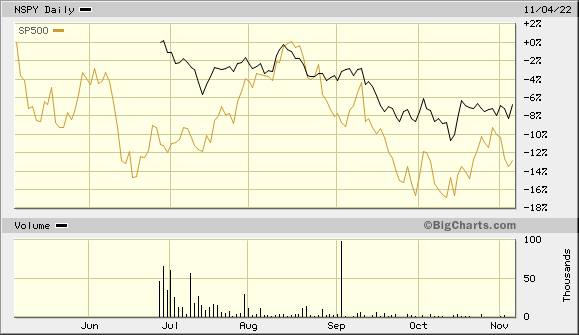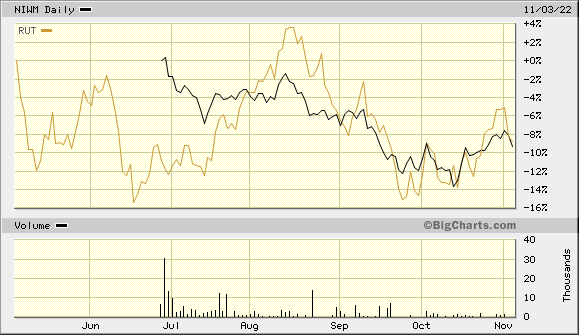Is There A Night Effect For Stocks?

One of the most puzzling observations reported by academics is that the equity premium comes mostly from overnight returns. Buying stocks at the close and selling them at the open outperforms a traditional buy-and-hold strategy. Challenging the efficient market hypothesis, overnight returns are higher and volatility is lower than for day and continuous investments.
For years, academics and institutional investors have been decomposing returns into layers to split the factors driving them. The models developed by Fama-French and Carhart identify the market, value, size, investment, operating profitability and momentum as risk factors. These helped explain much of the previous unexplained part of returns, often wrongly tagged as alpha. However, even after considering these factors, some anomalies repeat over time and generate some abnormal returns, that is, alpha.
Critics often argue that, as long as an anomaly is identified, it would quickly be arbitraged away. However, academics explain that under certain conditions that may not be the case. Arbitrage is a risky business because of noise traders’ behaviour and short-selling restrictions. A noise trader is an investor mostly guided by emotions, trading in the direction of all others without even acknowledging why. When prices disconnect from reality, noise traders often contribute to widening the gap, constituting a source of risk for an arbitrageur. Short selling a high-flying stock is much riskier than buying a battered down stock because potential losses are unlimited. An arbitrageur is not willing to incur such risks. For these reasons, we have been assisting market anomalies over the last many decades, which are rarely arbitraged away.
After decomposing the equity premium into day and night returns, researchers found that since at least 2008, the equity premium is solely due to overnight returns. Day returns have been close to zero or even negative while volatility usually peaks during the day. Risk premia appear negative during the day, constituting a major challenge to the efficient markets hypothesis. Researchers tried to take into account illiquidity and other potential issues always concluding they only explain a small part of the night effect.
One explanation for the night effect could be that, at times, investors seek some peace of mind, selling at the market close to then buying at the open. Such potential behaviour matches well with the fact that the night effect is driven in part by high opening prices which tend to decline in the first hour of trading.
There is one company dedicated to the research and exploration of the night effect – NightShares. They have been studying the effect in detail and launched a few ETFs this year that explore this anomaly. They studied the return-risk profile for US stocks between 2012 and 2022 and found that, during this period, the cumulative return for a buy-and-hold strategy was 235% while the return for day and night alternatives was 36% and 147%, respectively. This was a very bullish period, with 33 positive quarters and only 7 negative quarters. Therefore, the buy-and-hold strategy outpaced the other strategies, when considering unadjusted returns. To better understand what happened in the period, they split the periods into UP and DOWN markets depending on the returns for the quarter being positive or negative and found that:
- During the UP market, the average return was 5.9% and the overnight session captured two-thirds of this return while the day session captured just one-third;
- During the DOWN market, the average return was -8.8% and the overnight session captured just one-third of it while the day session captured the remaining two-thirds.
The data from NightShares suggests that, when the market is rising, most of the rise comes from the night (close to open) while when the market is declining, most of the decline comes from the day (open to close). The night strategy captures higher returns and less risk and presents itself with a higher Sharpe ratio. An investor targeting the night session, during the period 2012-2022, would underperform the market, but face a lot less volatility. A leveraged position to the point of levelling the portfolio’s volatility to the market’s volatility would outperform the market. The night-only exposure offers the best reward-to-risk ratio. NightShares also looked at what happened during the extreme periods between 2012 and 2022. They observed that, once again, the night session shows a better risk-reward relation than the day session.
The NightShares research is oriented by their will to justify the ETF products they’re selling to investors. Nevertheless, it is supported by several academic papers. The results they show can give a few clues to investors. First of all, buying at the open is the worst one can do. Eventually, everyone is waiting for the market open to buy and, most of the time, better opportunities surge during the day. The first hour is the worst. Because sentiment and emotion play a role and arbitrageurs are, in particular, not willing to arbitrage away mispricing when there are many noise traders, the opening price may be even more penalising for hard-to-value stocks, those where price is more sentiment-driven and that don’t have a track record of profits. Second, investors may wish to explore the night session’s alpha, as far as research supports it. To the extent that the harder-to-value stocks often show a larger price disconnection at the opening, the best opportunities for the night session may come from this spectrum of the market.

The first problem that comes with the night session strategy is transaction costs. It would be absurd to try to buy and sell 500 stocks each day. However, through the use of index futures, for example, that wouldn’t be the case. NightShares offers two ETF options: the NightShares 50 ETF (NYSEARCA:NSPY) and the NightShares 2000 ETF (NYSEARCA:NIWM). These ETFs charge annual fees of 0.55% and have been launched in June. Thus, they are in their early days. NSPY tracks the S&P 500 while the NIWM tracks the Russell 2000. Both promise the overnight performance of their respective indexes, from close to open.

So far in the year, they’re underperforming but it is too soon to make any conclusions. If the indexes are managed as expected, they should benefit from the night effect over time, even if during some periods it would appear better to just buy and hold. The biggest issue with these ETFs is that they are very small. Thus, they’re better tailored to small investors or those just willing to place a small amount of funds in a completely different strategy. Unlike what happens with many other strategies, where I see no value in investing through ETFs, in this case, it is worth taking a look at them to follow a strategy that would otherwise be too expensive and time-intensive.
Comments (0)